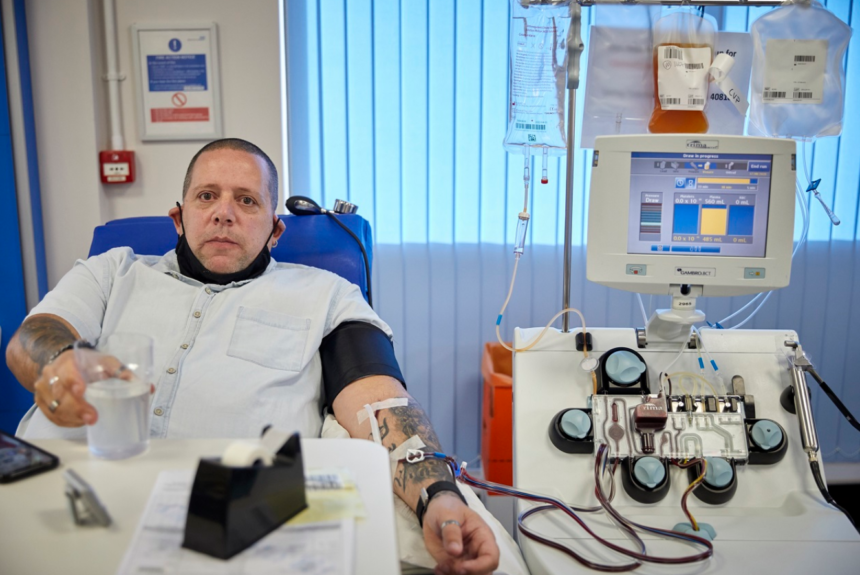Key Takeaways:
- The plasma donation process involves health screening, collection, and separation of plasma from blood components using an apheresis machine, lasting about 45 minutes to an hour.
- Plasma is critical for medical treatments, especially for conditions like clotting disorders, immune deficiencies, and burn management.
- Strict safety protocols are followed during plasma donation to ensure the well-being of both donors and recipients.
- Regular plasma donors often experience health benefits such as improved hydration, appetite, and a potential reduction in chronic disease risks.
- Online resources and apps can help locate nearby plasma donation centers easily, providing essential information on operating hours and donation types.
- Community drives for plasma donation promote engagement and can offer incentives like refreshments or gift cards, fostering a culture of giving.
- Common myths about plasma donation being painful or time-consuming can deter potential donors; in reality, it is generally pain-free and quick.
- Compensation for plasma donation typically ranges from $20 to $50, providing incentives for regular contributions.
- Preparation for donation includes adequate hydration and nutrition, while bringing ID and documentation is recommended on donation day.
- Post-donation care involves hydrating, resting, and monitoring for any side effects, ensuring optimal recovery before future donations.
1. Understanding the Plasma Donation Process: From Start to Finish
What Happens When You Donate Plasma?
When you donate plasma, a specialized healthcare professional collects the liquid component of your blood, which is rich in proteins and antibodies essential for many medical treatments. The process starts with a simple health screening where your vital signs, medical history, and current health status are assessed. Once cleared, you will be comfortably seated in a donation chair with your arm extended for access. A phlebotomist will insert a sterile needle into one of your veins, typically in your arm, and blood will flow into a collection bag.
During the donation, your blood is processed through an apheresis machine. This machine separates the plasma from red blood cells, white blood cells, and platelets. The red and white blood cells are returned to your body through the same needle after being separated from the plasma. The plasma donation process generally lasts around 45 minutes to an hour. You can donate plasma more frequently than whole blood typically every 28 days, making it a significant way to contribute to essential medical therapies.
The Vital Role of Plasma in Medical Treatment
Plasma plays an indispensable role in the medical field, as it serves several critical functions. It is used in treatments for a variety of conditions, particularly for those with clotting disorders, liver diseases, immune deficiencies, and severe burns. Plasma-derived therapies can combat conditions such as hemophilia and help manage the immune response in individuals undergoing cancer treatments.
Moreover, immunoglobulins, derived from plasma, play a crucial role in providing immunity against infections, making plasma donations vital for patients with compromised immune systems. Throughout the world, plasma is transformed into life-saving medicines and therapies, with the proteins and antibodies extracted being used for immunotherapy, surgery, and trauma care, thus underlining why your contribution as a donor is so vital to community health.
Safety Protocols and Health Benefits of Donating Plasma
Safety is paramount in the plasma donation process. Established health protocols ensure that donations are conducted ethically and hygienically. The facilities adhere strictly to regulations set forth by the FDA and other relevant health authorities, ensuring that both donors and recipients are well-protected. Sterile, single-use equipment is employed, and rigorous screening processes are followed to ensure the health and safety of both parties.
Furthermore, there are significant health benefits associated with donating plasma. Regular donors often experience increased hydration levels and appetite, as the body compensates for the loss of plasma by refreshing its supply. Research also suggests that plasma donation may promote a healthier immune response and help balance cholesterol levels. Responsible donors may reduce their risk for cardiovascular diseases and other chronic conditions, making plasma donation a mutually beneficial practice that fosters a healthy community.
2. Locating Plasma Donation Centers: Tips and Tricks
How to Use Online Tools to Find Nearby Donation Centers
Finding donating plasma locations near you has become more convenient thanks to various online resources and tools. Major plasma donation organizations like Grifols, CSL Plasma, and Octapharma offer locator features on their websites that allow you to search by ZIP code or city, providing detailed information on hours of operation, donation guidelines, and types of plasma donations accepted.
Additionally, apps and social media platforms are helpful for discovering local plasma donation opportunities. Many community groups on social networks share updates about upcoming donation events, while smartphone apps connect potential donors with nearby facilities, offering real-time updates on wait times and available appointment slots. This ensures you can make informed choices about where and when to donate at donating plasma locations.
Mapping Out Your Plasma Donation Journey: Local vs. National Centers
When planning your plasma donation visit, it’s essential to differentiate between local and national centers. Local centers may offer a more personal touch, with community-focused services tailored to individuals, while national chains often feature standardized procedures, a wealth of resources, and higher throughput, allowing for more flexible appointment scheduling.
However, the type of center you select can affect your overall experience. National centers may tend to have more advanced equipment and broader access to medical resources, contributing to a more streamlined process. Consider the distance, convenience of location, and the overall reputation of the center recognized in your community as you map out your plasma donation journey. Checking reviews and experiencing different centers can help you pinpoint which facilities best align with your expectations.
Community Drives and Events: Donating Plasma in a Fun Way
Participating in community drives and events is an exhilarating way to donate plasma while engaging with your neighborhood. Many organizations partner with local health departments, universities, and community centers to organize plasma donation events, sometimes accompanied by festivities such as refreshments, music, and additional incentives like gift cards or merchandise for donors.
These events are vital in raising awareness and fostering a culture of giving within a community. Such gatherings not only provide access to convenient donation options but can also encourage social interaction and camaraderie among donors. Engaging in community drives can help normalize the practice of plasma donation, making it more accessible and appealing to individuals who may have been hesitant. By reaching out to community organizers, you can find upcoming events and understand how your donation impacts the lives of others right in your neighborhood.
3. The Myths and Realities of Plasma Donation: Debunking Common Misconceptions
What Your Friends Didn’t Tell You About Donating Plasma
There are numerous misconceptions surrounding plasma donation that can deter potential donors. One common myth is that plasma donation is painful or overly uncomfortable. In reality, the process is generally pain-free, with only a brief sensation during the needle insertion, comparable to giving blood. The sensation fades quickly, allowing donors to relax during the remainder of the donation.
Another notable misconception involves the duration of the donation process. Many people fear they will have to spend an entire day at the donation center. However, the truth is that the process usually takes between 45 minutes to an hour, making it an easily manageable commitment for many individuals. Understanding these realities can empower individuals to embrace the donation experience without undue apprehension.
Plasma Donation vs. Blood Donation: What’s the Difference?
While plasma and blood donation may seem similar, the processes and outcomes are quite distinct. Plasma donation specifically focuses on collecting the liquid portion of blood that includes water, electrolytes, proteins, antibodies, and waste products. In contrast, whole blood donation collects all components of the blood red cells, white cells, platelets, and plasma within a single donation. This fundamental difference impacts how often one can donate; plasma donors can typically do so more frequently compared to whole blood donors.
Furthermore, the purposes vary; plasma donations are crucial for individuals needing therapeutic treatments, while whole blood is used in a variety of settings including surgeries, traumas, and medical emergencies. Understanding these differences allows potential donors to make informed decisions based on their personal abilities and motivations.
Understanding Compensation: What to Expect from Your Donation
Compensation for plasma donation varies widely by location and organization. Many plasma centers do offer financial compensation for donations, as it serves as an incentive to encourage regular participation. The compensation amount typically ranges from $20 to $50 per donation, and may increase for first-time donors or during promotional periods. Such compensation not only serves as financial assistance for many donors but also reflects the high demand for plasma in medical treatments.
It is essential to keep in mind that while compensation is offered, the primary motivation for donating plasma should ideally be to help those in need. The benefits and fulfillment derived from knowing your contributions could potentially save lives should guide your decision to participate. By volunteering your time and resources, you contribute to a larger cause that transcends personal benefits it is an act of community service that illustrates the interconnectedness of society.
4. Maximizing Your Donation Experience: Tips for First-Timers
Preparing for Your Visit: What to Eat and Drink
Preparation is key to ensuring a smooth and successful plasma donation experience. First-time donors should pay particular attention to their hydration and nutrition in the days leading up to their appointment. Drinking plenty of water at least 8-10 cups per day helps to keep your veins plump and easy to access, making the donation process easier. Additionally, maintaining a balanced diet rich in iron, protein, and vitamins can be beneficial. Foods such as spinach, beans, lean meats, and fortified cereals help sustain healthy plasma levels.
Avoid alcohol and caffeine for at least 24 hours prior to donating, as these can lead to dehydration and interfere with your overall experience. A light snack, including something containing complex carbohydrates like whole grain sandwiches, or a banana, just before donation can provide a useful energy boost without weighing you down during the appointment. By being well-prepared, you can ensure that you’re mentally and physically ready for the donation process.
What to Bring and What to Expect on Donation Day
On donation day, it’s advisable to bring a few essentials to make the process smooth. Carry a form of identification, such as your driver’s license or state ID, as well as any necessary documentation or appointment confirmations provided by the donation center. Dressing in layers is also a good idea, as donation centers often adjust their climate control settings, and you should be comfortable during your time there.
Upon arrival, expect to go through a brief check-in process that includes signing consent forms, undergoing a quick physical evaluation, and, if you’re a first-time donor, a detailed interview regarding your health history. Once the medical team clears you for donation, you will be escorted to the donation area. While donations occur, you may relax or read a book, as the atmosphere is typically designed to be calming and stress-free. By preparing ahead of time, you can reduce any anxiety and enjoy a rewarding donation experience.
Post-Donation Care: Ensuring an Optimal Recovery
After your plasma donation, proper post-donation care is essential to ensure optimal recovery. First and foremost, it’s crucial to continue hydrating to replenish your body’s fluids. Centers often encourage donors to drink extra water or electrolyte-rich drinks like sports drinks after donating. Resting for at least 15-30 minutes at the donation center is also recommended; take this time to enjoy some light snacks provided and allow your body to stabilize.
Be mindful of any side effects you may experience, such as light-headedness or fatigue. If you feel any discomfort, inform the staff immediately they are expertly trained to help you manage any post-donation reactions effectively. Typically, donors can resume normal activities shortly after donating; however, it’s advisable to avoid strenuous workouts for at least 24 hours. Following these guidelines not only aids in your recovery, but it also ensures that you’re fully prepared for your next plasma donation.













